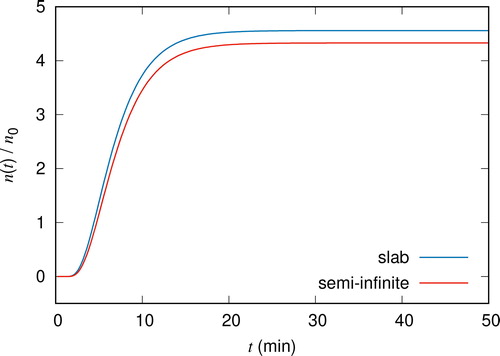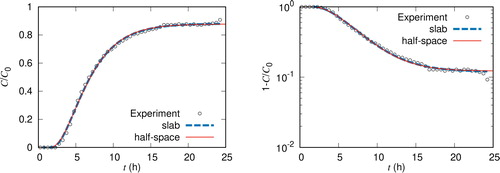Figures & data
Table A1. The dependence of on K for N = 30,
M = 40.
Table A2. The dependence of on N for K = 6,
M = 40.
Figure 1. The particle number density is plotted as a function of t. The blue curve is from (4.3) and the red curve is from (4.4).

Table A3. The dependence of on
for K = 6, N = 30, M = 40.
Table A4. The dependence of on M for K = 6, N = 30,
Figure 2. The breakthrough curve of (Left) and
(Right) as a function of time. The experimental data (black open circles) are compared with numerical values computed from (4.3) and (4.4) using the linear transport equation in the slab geometry (blue dashed line) and half-space geometry (red line).

Table 1. Fitted parameters.
